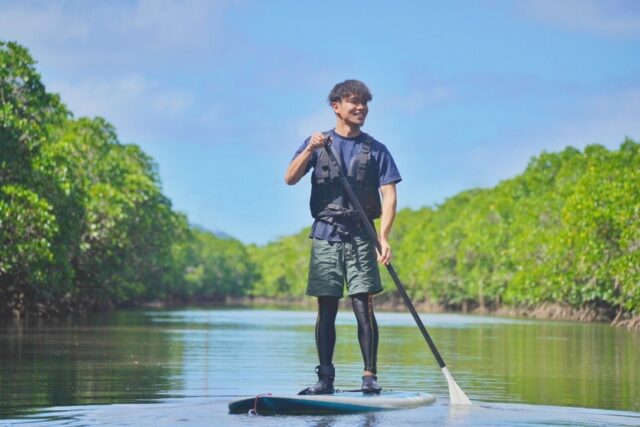Local Column
COLUMN
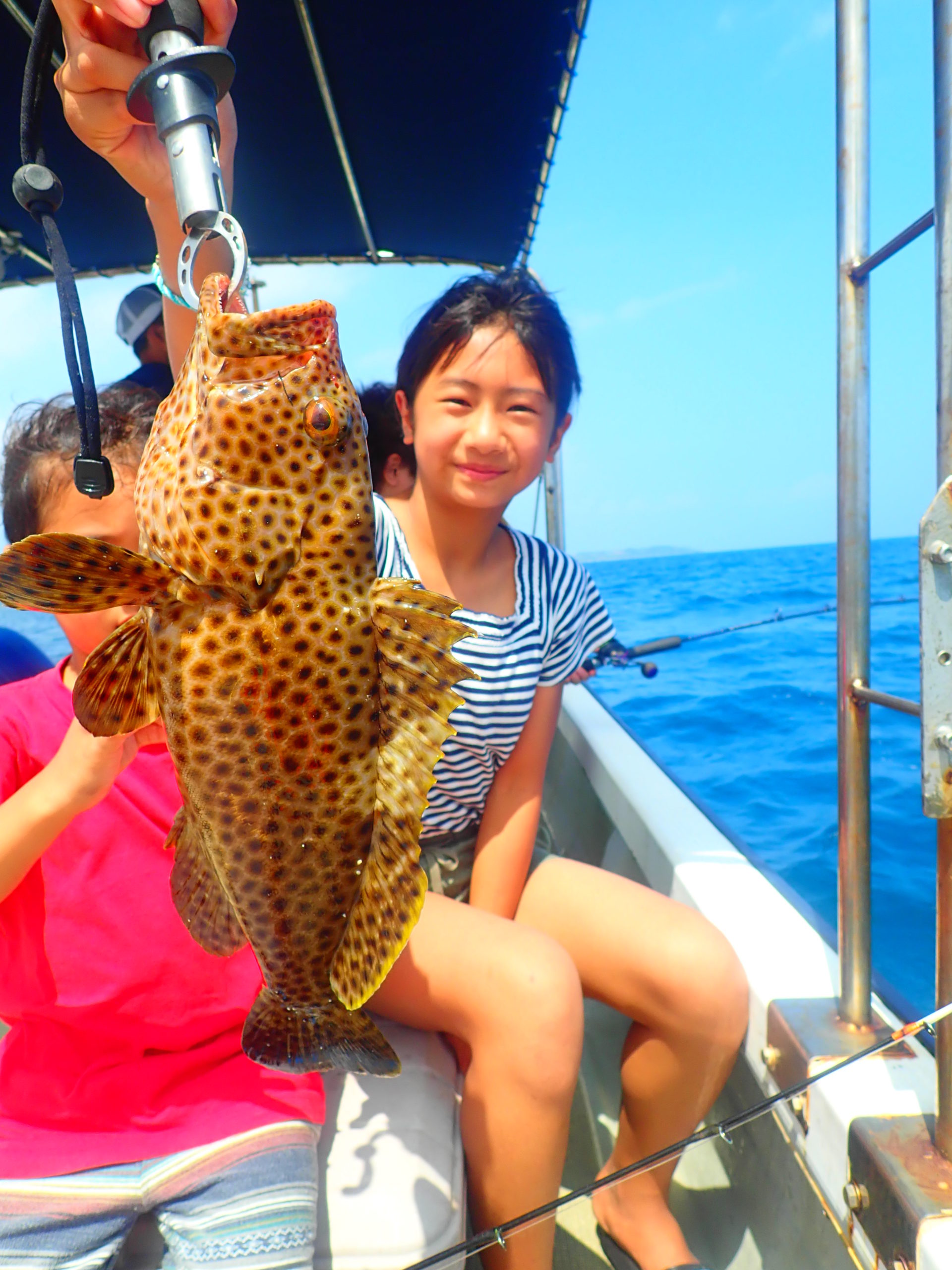
Miyako Island Fishing
Hello everyone!
Recently, the image of "fishing as a hobby for old men" has faded, and the number of women and young men who enjoy fishing is on the rise.
Fishing can be enjoyed in a variety of ways, including "river fishing," which is fishing in freshwater, and "sea fishing," which is fishing in the ocean.
There are also two types of "sea fishing": "land fishing," where you fish from land, and "boat fishing," where you enjoy fishing from a boat.
Thus, although there are different types of fishing, to my surprise, all of them can be enjoyed on Miyako Island!
There are many fish on Miyako Island, and accordingly, many Miyako Island fishing tours are offered.
Why don't you have a memorable fishing experience in the sea of Miyako Island, which is rich in living creatures?
Therefore, this article will introduce fishing spots, fishing tours, and fish that can be caught on Miyako Island.
目次
The sea of Miyako Island is full of creatures
Miyako Island was formed by coral uplift, and is the largest group of tabletop coral reefs in Japan.
Surrounded by coral, the sea is extremely clear and teeming with life.
The creatures can be seen visually from above the sea.
So you can enjoy snorkeling as well as fishing.
The sea of Miyako Island is inhabited by colorful fish that cannot be seen in any other sea.
Enjoying it with your eyes is fine, but this is definitely a place where you want to catch it!
Is the sea of Miyako Island suitable for fishing?
As mentioned earlier, the sea of Miyakojima is rich in nutrients and is inhabited by a variety of sea creatures.
This makes it a popular fishing spot for anglers!
Larger fish such as Giant Giant Horse Mackerel, Southern Blackfin Seabream, Okinawa Yellowfin Seabream, and other species of Blackfin Seabream, as well as Aori Squid, are not only standard fish, but also fish that can only be caught in Okinawa waters.
Therefore, even beginners will not get bored.
There is also the possibility of catching high-end fish such as aobudai and makubu.
If you join a fishing tour, you will be guided to spots where you can enjoy fishing more in the sea of Miyakojima.
In addition, even beginners can participate in the tour empty-handed, as detailed lectures are given on everything from rod assembly to baiting.
If you want to start fishing but don't know where to go or what to do! If you are interested in fishing, we recommend that you join a tour.
Recommended Fishing Spots in Miyako Island
Land fishing can be enjoyed on Miyako Island!
We have carefully selected five of these spots that are particularly suitable for fishing.
In addition to fishing, there are plenty of places to enjoy dining and sightseeing.
Miyakojima Underwater Park
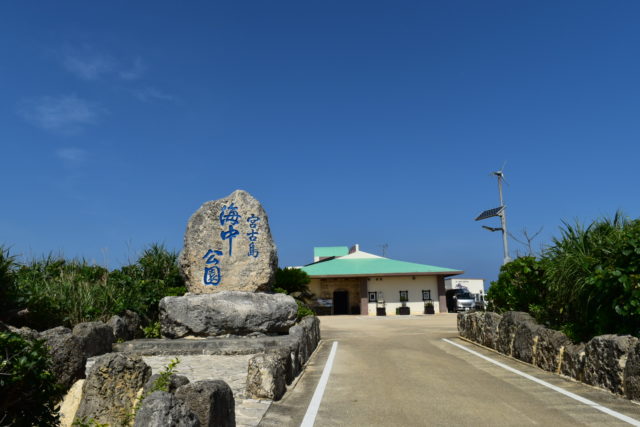
Miyakojima Underwater Park is located 28 minutes by car from Miyako Airport.
Located in front of the Ikema Bridge, it is a popular tourist spot where visitors can look underwater.
This is a well-known fishing spot, and you can see islanders enjoying fishing from early in the morning.
There is also a nearby inlet where fish tend to congregate, so you may be able to catch a lot of fish.
It is also equipped with a restaurant and restrooms, so you can enjoy fishing all day long with breaks in between!
Location: 2511-1, Aza-Karimata, Hirara, Miyakojima City, Okinawa, Japan
Access: 28 minutes by car from Miyako Airport
Parking: Available
Meals (nearby): Available
Toilet: Yes
Nanamata Beach
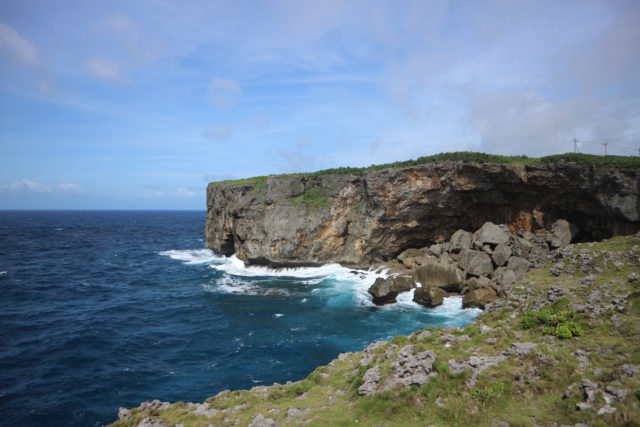
Nanamata Beach is a spot where you can enjoy fishing from the cliff.
You can enjoy fishing by simply dropping the hook without having to cast far.
There is a tide pumping station here.
Tide pumping sites are places where tides were collected in the past to make nigari (bittern for tofu), and the sea is extremely clear.
However, the foothold is very poor on the cliff, so do not take the easy way out and look down the cliff.
To avoid accidentally falling in, we recommend that you enjoy fishing when the weather is fine and when you have a good vantage point, such as in the morning or during the daytime!
Address: Fukusato, Jobe, Miyakojima City, Okinawa, Japan
Parking: Available
Sawada Beach
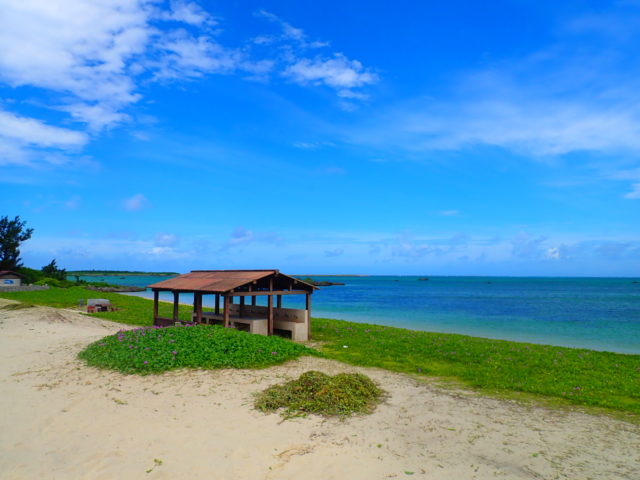
Sawada no hama (beach) is located in the northwestern part of Irabu Island, one of the Miyako Archipelago, and is characterized by a beach dotted with huge rocks.
It is a 15-minute drive from Sarahama Port.
Many rocks are also lying offshore, making it a photo-worthy spot at sunset.
Barbecues are also available, so you may enjoy the scenery and fishing while eating your meal.
Because of the many rocks, the crevices between the rocks provide hiding places for fish, and many fish hide in them, making the area very suitable for fishing.
However, there are so many rocks that you should be careful not to get caught in the roots!
Location: 1725-2 Sawada, Miyakojima City, Okinawa, Japan
Access: 15 minutes by car from Sarahama Port
Parking: Available
Meals (nearby): Available (barbecue)
Toilet: Yes
swan song
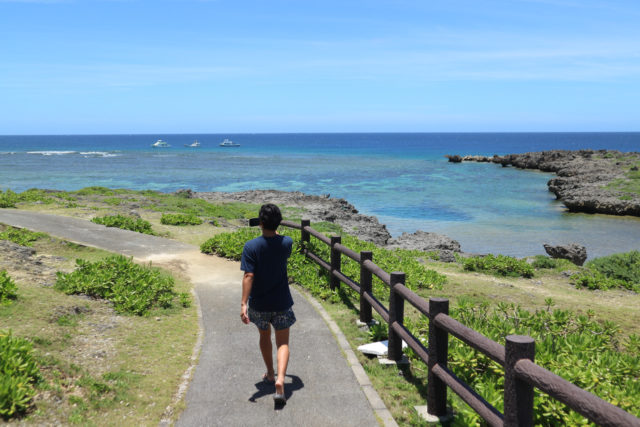
Shiratorizaki is a popular fishing spot on Irabu Island!
It is a little far from Miyako Airport as it takes about 30 minutes by car, but that is why there is no activity in this area.
There are few tourists and fishermen, so you can throw your catch in peace.
The sea around Shiratorizaki is a great spot to catch big fish such as gara and meibai, and fishing is recommended from daytime to nighttime.
The summer season is easier to fish because of wind and other weather conditions.
Another reason we recommend it is that it is the northernmost point of Irabu Island, and you can enjoy fishing while viewing the beautiful scenery!
The whitecaps crashing on the cliffs are dynamic and beautiful.
There are no places to eat nearby, and the streets are not crowded, so those unfamiliar with the area should be ready to cut loose and return before dark.
Night fishing is fun, but please be patient here.
Location: 908-2 Irabu Sawada, Miyakojima City, Okinawa, Japan
Access: 30 minutes by car from Miyako Airport
Parking: Available
Meals (nearby): None
Toilet: Yes
Nishiheirenaizaki
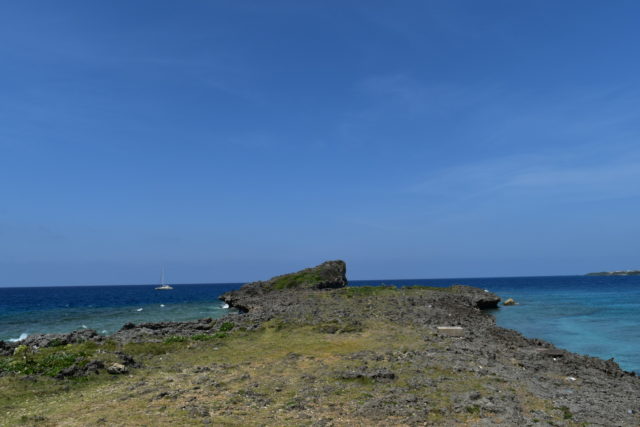
Located at the westernmost tip of Miyako Island, Nishiheinanazaki is one of the island's most famous sunset spots.
Like Shiratorizaki, it takes about 30 minutes by car from Miyako Airport.
Because of the migratory fish that swim in the waters around Nishiheiannazaki, it is possible to catch fish such as bonito, tench hagi, and bigeye snapper by fukase fishing, in which a bait, hook, and line are used to float the hook without using a float.
You can also fish for gara and other big fish at the end of the cape!
Nearby are the Snow Salt Museum, Nishi no Hama Beach, and Miyako Horse Farm, where you can enjoy activities and select souvenirs.
If you want to enjoy fishing, but first want to enjoy Okinawa to the fullest, this is the place for you! This is a recommended spot for those who want to enjoy fishing, but first want to enjoy Okinawa!
Location: Karimata, Hirara, Miyakojima City, Okinawa, Japan
Access: 30 minutes by car from Miyako Airport
Parking: Available
Meals (nearby): None
Toilet: Yes
What can be caught in the sea of Miyakojima?
We hope you have learned that there are many fishing spots on Miyako Island.
With fishing spots that nice, you may be wondering what kind of fish you can catch.
Next, we will introduce six species of fish that can be caught on Miyako Island.
gala
The first fish we will introduce is the gara.
Gara is a regional name, commonly known as the waxfin jack.
Gara are migrating from mid to low coastal waters.
They are known to form schools of close to 10 fish, sometimes as large as several hundred.
Gara is said to be up to 2 meters long and weigh up to 80 kg.
While it is a popular fish for anglers, it is actually reputed to be delicious to eat as well.
However, some of them are said to be poisonous, so those who wish to eat them should ask a local person to cook the gara they catch.
Scarus ovifrons
The bluefin belongs to the family of the sea breams of the order Bryozoa, and is a large sea bream that can grow up to 90 cm in length.
Adults have a distinctive frontal hump that protrudes.
They are active swimmers during the day and rest at night in the shade of rocks.
When sleeping, they produce mucous membranes from their mouths and use them to create a transparent sleeping bag that envelops their bodies.
They are omnivorous, eating crustaceans, algae, shellfish, etc. Many visitors come to the area with the goal of catching aobudai because they are so picky eaters.
oval squid (Sepioteuthis lessoniana)
The bluefin squid is a squid that can be seen throughout Japan, from the coasts of southern Hokkaido and southward to Okinawa.
They are found near reefs and seaweed at depths ranging from a few meters to around 50 meters.
The sparkling white, transparent body of the bluefin squid shines in the clear waters of Miyakojima.
It is inevitable that you will be impressed if you can see them in a group of several animals!
Since bluefin squid hatch in the summer, adults can be fished from April to June!
stout chromis (Chromis chrysura)
As its name suggests, the Amami Sparrowhawk is a species of sparrowhawk about 15 cm in length that inhabits coral reefs and rocky areas south of Amami-Oshima Island.
They are omnivorous, feeding on zooplankton and attached algae.
The body color is dark in the front and light on the dorsal fin soft stripes and the posterior portion of the buttock fins.
Elabaster (member of India's caste)
Ilabucha is a high-end fish that lives in the waters of coral reefs and is a representative of Okinawa.
Like the aobudai, it is a large boulefish, and its entire body is characterized by its blue coloration.
Its blue appearance and size have quite a strong impact, so at first glance it does not look delicious, but it is actually very tasty.
It can be enjoyed in a variety of ways, including sashimi, grilled, and simmered.
It is also available at izakayas and sushi restaurants on Miyako Island, so if you are interested in trying it, please do so.
bloodworm (nonbiting midge larva)
The red meibai, also called yukata grouper, is a member of the grouper family with a body length of about 40 cm.
Body color is red-based with cobalt blue or blackish spots throughout.
Like ilabucha, this is also a high-end fish, and is a popular Okinawan ingredient used in masu stew, which uses salt and awamori (Okinawa rice wine) to bring out its flavor.
Popular Fishing Tours in Miyako Island
boat fishing
As I mentioned earlier, land fishing is fun, but boat fishing is a great way to encounter fish that you can't meet while land fishing.
Miyako Island is home to hundreds of species of root fish with a narrow range of habitats.
You can catch a lot of delicious fish, such as meibai, wrasse, and taro fish, and have them cooked at one of our partner taverns.
Boat fishing is an interesting and enjoyable way to fish because the boat follows the school of fish to a more fishable location.
Since you will be given a lecture on all aspects of baiting and catching fish, beginners and families can enjoy fishing with ease.
sunset fishing
Another recommended element of boat fishing is that you can enjoy fishing while surrounded by the beautiful ocean!
Miyako Island offers one of the most spectacular sunset views in Japan because the air is so clear.
Incidentally, just before the sun sets on Miyakojima, a phenomenon called "green flash" sometimes occurs, in which the sun shines green or gold!
It is said that if you can see this phenomenon, you will be lucky.
Why don't you enjoy leisurely boat fishing while enjoying the beautiful sunset of Miyako Island?
Full-day charter tours (including fishing activities)
Lastly, we offer a full-day charter tour!
Of course, since it is a charter, you can enjoy not only fishing but also snorkeling and diving.
If you are so inclined, you can take a break and enjoy fishing after enjoying marine activities such as snorkeling.
Since you will not be participating with other people, you will have exclusive access to the sea.
Since you can freely choose what you want to do, we recommend that you use this service for group trips and important occasions!
summary
In this issue, we introduced fishing on Miyako Island.
We hope you enjoyed it.
There are many fishing spots on Miyako Island, where you can catch rare, high-end fish and fish that are not found on the mainland.
There was also boat fishing available offshore and charter tours that allowed visitors to monopolize the ocean.
Please use the tour that best suits the fish you want to catch and your objectives.
Thank you for reading to the end.

